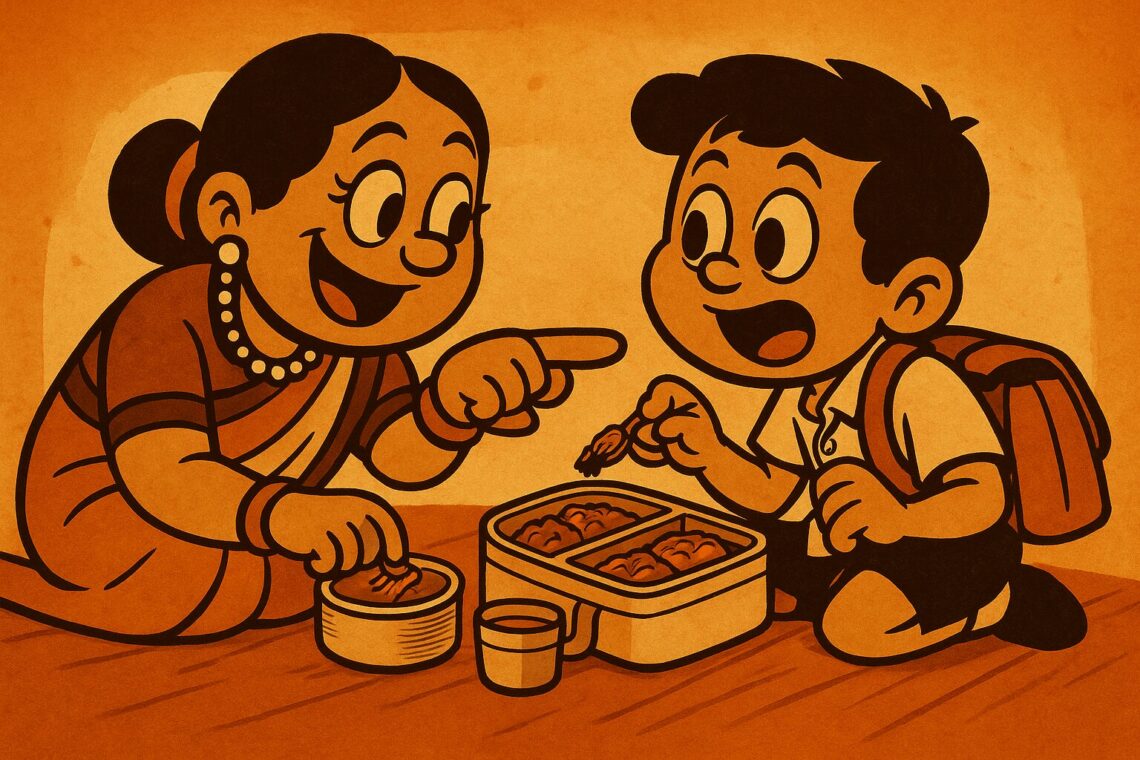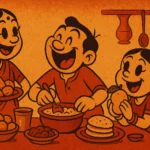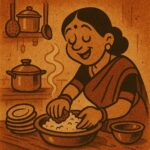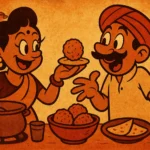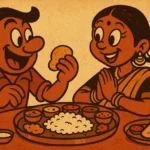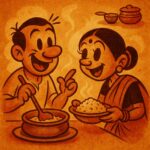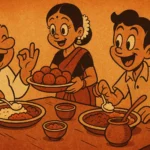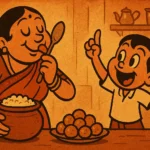In the halls of my middle school, the question wasn’t just “Where are you from?” It was, “Where are you from *from*?” In retrospect, I get it. There’s something about an accent, a name, or—more importantly—*what’s inside your lunchbox* that raises the question of cultural belonging. It’s the food that becomes an unmistakable marker of where you come from. And for me, growing up in Mumbai and later moving to Austin, Texas, that question was often paired with a side of curiosity about my lunch—a school day ritual that made me feel both like I was home and also like I didn’t quite fit in.
It wasn’t the usual peanut butter and jelly sandwich. No, my lunchbox was more like a mini culinary embassy—a steel dabba packed with rotis, sabzi, maybe a handful of crispy bhujia, and that unmistakable whiff of spices. To most of my classmates, it was a mystery. For me, it was normal. It was comforting. It was home.
The Lunchbox Anxiety
When I first moved to the U.S., the notion of packing my lunch didn’t feel as simple as it had back home. Back in Mumbai, my mother had perfected the art of packing the perfect lunch. A roti, a dry sabzi, a dab of pickle, and sometimes—just to remind me who I was—sweets tucked neatly in the corner. But here, the lunchbox felt like a stage, and every day was an audition. My first few months at school, I experienced what I can now only describe as lunchbox anxiety. Would it smell too much? Would anyone ask what it was? Would I be “different” for bringing food that wasn’t “normal” to them?
At first, I tried to blend in. I occasionally swapped my paratha for a salad, or my dal for a plain sandwich, hoping to avoid the looks, the questions. But after some time, I realized that my lunchbox wasn’t just something to eat—it was a bridge between two worlds. It wasn’t just food. It was a conversation starter. It was me. My *tiffin* (the Indian version of a lunchbox) was bursting with flavors, stories, and most importantly, a deep connection to where I came from.
Lunchboxes and Cultural Pride
Looking back, I now understand that the “Where are you from *from*?” question wasn’t just about the place on a map, but the nuances of cultural identity. My lunchbox wasn’t just filled with food—it carried the pride of generations. The strong flavor of *jeera*, the zing of tamarind in the chutney, the smoothness of homemade ghee, and the occasional surprise of crispy papad—it all became a reminder that I was a part of something far larger than my small lunchbox. It was a reflection of my culture, my heritage, and my family’s tradition of cooking with love. But that also meant it was a bit of an anomaly among all the lunchboxes filled with boxed sandwiches and chips in the cafeteria.
In a strange way, my lunchbox became my “identity project” at school. It was a conversation starter that made me unique. I remember the first time a classmate tried my dal and roti and asked if they could have more. “It’s so different, but really good!” they exclaimed. Suddenly, something I’d seen as “other” became the star of the lunchroom. It wasn’t the pasta salad or the fruit salad; it was the *sabzi* and the *dal* that had an unexpected edge—both in flavor and in how it brought people together.
The Spice of Curiosity
What’s funny is that the very thing I had once been embarrassed by—my spicy food, my pungent curries—became my most “Americanized” trait. To my friends, Indian food wasn’t just food; it was an exotic experience. I had inadvertently become the unofficial “Indian food ambassador” of my class. The same thing that felt awkward at first turned into something others wanted to be part of. The “Where are you from *from*?” question would often come with an invitation to share lunch. I’d find myself explaining what each ingredient was, the history behind my grandmother’s secret recipe, and how the food tasted at different stages of preparation. My lunchbox had evolved from a source of anxiety to a source of pride—and food became a bridge, not a barrier.
The Subtle Tension of Food and Identity
However, the tension remained. Even though my lunchbox was an “icebreaker” in many ways, it wasn’t always easy. The same curiosity that led to new friendships sometimes came with undertones. In high school, as I continued to bring my packed lunch to class, I could sense the judgment: “What’s that smell?” and “Is it too spicy for me?” The food was always talked about as if it was both fascinating and dangerous—like a door into a world that was interesting but unfamiliar. That pressure—to “belong” while keeping the authenticity of my food—remained constant. I would navigate between the world I grew up in and the world I was trying to fit into, with each meal feeling like a small act of resistance and acceptance at the same time.
Food as a Quiet Act of Rebellion
Today, as I reflect on those years, I see the lunchbox less as an anxiety-inducing artifact and more as an act of rebellion—a quiet rebellion against being forced to fit in, against erasing the richness of my culture to blend into the mainstream. Every time I open my lunchbox now, whether in Texas or back in Mumbai, I am reminded of my roots, of the hands that made my food, and of the love that came with it. And I’m proud to pass that tradition on to the next generation. My son, who now carries his own version of the tiffin, understands the power of food in telling a story. He’s just begun to appreciate the textures and flavors of *dal* and *sabzi* in a new way, with curiosity rather than apprehension. And every time he takes a bite, I smile, knowing that the lunchbox has once again done its job—of connecting us to the past while reaching into the future.
So the next time you ask someone “Where are you from *from*?” take a moment to think of the lunchboxes that come with the answer. Because inside, they hold so much more than just food—they hold identity, pride, memories, and the stories that need to be told, one bite at a time.
Born in Mumbai, now stir-frying feelings in Texas. Writes about food, memory, and the messy magic in between — mostly to stay hungry, sometimes just to stay sane.

